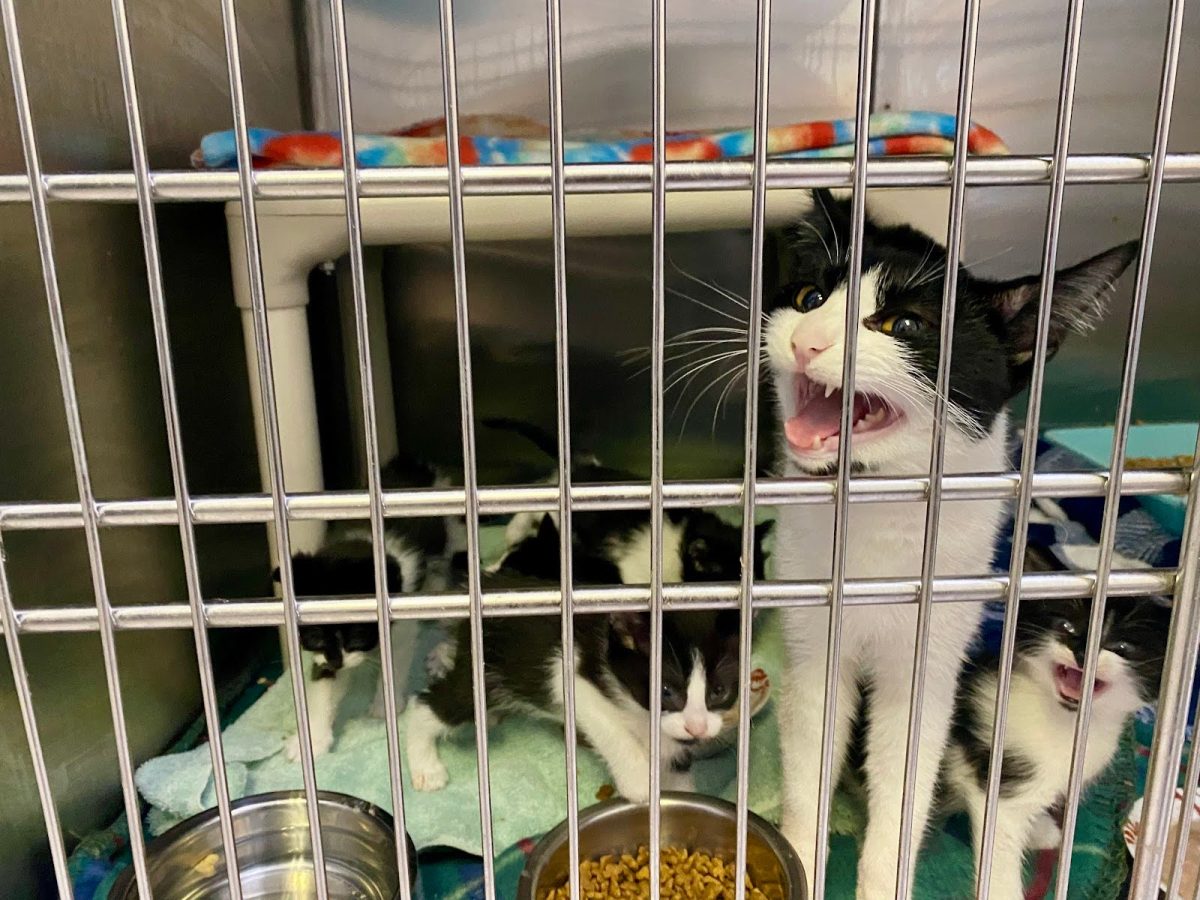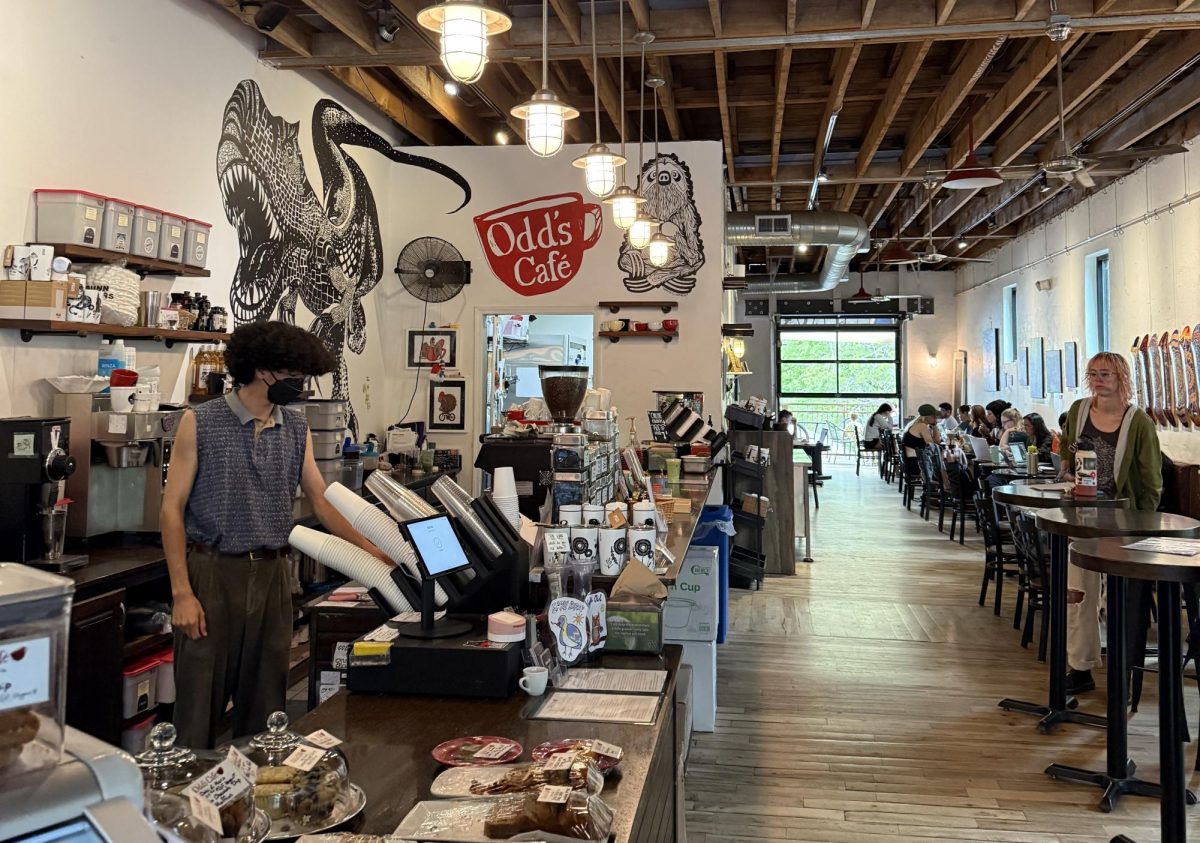By Catherine Pigg
Opinion Editor
[email protected]
Rolling through the meat section in the grocery store, some labels may catch a consumer’s eye by claiming to be “humanely raised meat.” These types of meats tend to be sold at a heftier price than meat not marked as humane.
While holding the meat, a carcass of a once living and breathing sentient being, the question arises: What does humane-raised meat even mean?
The United States Department of Agriculture’s Food and Safety Inspection Service does not currently have a definition for “humanely raised.” This department holds the responsibility of ensuring the accuracy of food labels, yet no clear definition can be found for the label.
The U.S. government provides an ambiguous provision for “humane” killing of animals in the meat industry, which is the Humane Methods of Livestock Slaughter Act. This act focuses on how farms or factory farms should kill the animals, but does not set guidelines on how to raise animals in a healthy environment. The vague rules for slaughter established by the act state the slaughter must be “rapid and effective” such as “a single blow or gunshot or an electrical, chemical or other means.” This demonstrates how elusive companies can be when choosing a method of slaughter and still be labeled as humane.
A farm worker could shoot a cow in the head with a stun gun, which shoots a bolt into a cow’s head, between their eyes, instantly stunning it while the cow is on a conveyer belt and still be considered humane under the HMLS Act. This tends to be one of the most popular methods. Animals could also be electrically stunned and labeled as humane, according to the act. If properly stunned electrically the animal’s body will suffer from a seizure before death; electric stunners tend to be used on pigs in farms, according to an article written by Temple Grandin for Colorado State University.
Interestingly, the HMLS Act does not apply to chickens or other birds. So aviatory animals have no protections or guidelines on how to be killed or kept. TryVeg, a nonprofit activist organization, reports more than approximately 8 billion chickens are slaughtered annually in the U.S. for consumption. One of the most well known methods consists of shackling chickens upside down while their throats are slit, although some birds miss the blade and instead end up being scalded alive, according to TryVeg. Its website, TryVeg.com, offers videos of such things happening inside of farms.
Another method for chicken slaughter consists of stunning the birds by running them through a vat of electrified water, this method considered the most “humane” compared to alternatives. The results of this stunning, however, do not guarantee every chicken will be properly stunned resulting in some birds being boiled alive.
Videos posted by People for Ethical Treatment of Animals, Mercy For Animals and TryVeg show undercover footage of chickens and turkeys having their heads stomped on, chickens being boiled alive and baby male chicks being ground alive as well. Since birds are not protected under the HMLS Act, this is legally considered humane in the U.S.
The Animal Welfare Institute reports animal welfare and environmental claims such as “sustainably farmed” or “humanely treated” are approved without supporting evidence. Eighty percent of claims by meat producers have no proof.
According to a study by The Humane Society of the United States, 95 percent of the 280 million hens in the U.S. are confined in battery cages with five to 10 birds confined in each cage. The wire flooring of these cages deprives hens of the opportunity to express natural foraging behaviors, imperative to their mental health. These hens are intensively confined, offering no opportunity to exercise. This confinement does not expose them to the normal range of physical forces that structure their bones. Ample evidence provided in the study shows the restriction of normal movement patterns to the extent found in battery cages causes physical harm to bones. According to the study, 24 percent of birds removed from their cages at the end of the laying period suffered from broken bones.
The same study by The Humane Society of the United States also reports because chickens are so confined and packed into cages, many of these farms see cannibalism and feather picking among these chickens. The lack of mental stimulation causes these issues among chickens, especially since they live so confined. Farms even go as far as to adopt a new practice of trimming the beaks of chickens without anesthetics or analgesics. The beak provides hens with important sensory information since the beak tip is highly innervated. Egg-laying hens who survive will go on to be slaughtered for meat.
All of this information calls into question whether or not “humane” meat truly exists or if murdering a living being could ever be considered humane at all.
Categories:
Meat cannot claim to be humane under current law
November 7, 2017
0
More to Discover


















Craig Shapiro • Nov 10, 2017 at 4:49 pm
“Humane” doesn’t mean a thing. Animals are still condemned to miserable lives and horrific deaths just so their flesh can be piled on our plates. The only humane choice is to go vegan.
Ty Savoy • Nov 8, 2017 at 2:30 pm
There really is no way to humanely kill someone who does not want to die. Nonhuman animals don;t want to die any more than us human animals. It’s ethically indefensible to continue to cause animals to suffer throughout their lives, then kill them. when there is no need to do so.
Generations in the future will look back in amazement… this is a no-brainer. We live in a culture of people very proud to call themselves animal lovers, yet we continue this horror on a daily basis. Go Vegan. Please.
Akbar • Nov 8, 2017 at 7:34 pm
EXACTLY!!! Bravo, and thank you for saying this.
Omnivore and Proud • Nov 29, 2017 at 12:28 pm
Nah, I’m good. Meat tastes good.
Besides that, this false duality you’ve created giving you the moral high ground no matter what is an ignorant way to debate. You can state your opinion all you want, and I support your right to think however you want. Be vegan, good for you. But when you call something a fact when it’s obviously not, you lose all credibility and hurt your movement in the process. Trying to browbeat and guilt people into adopting veganism is an extremely underhanded and self-defeating tactic.
Randy Janssen • Nov 7, 2017 at 3:24 pm
One of the reason a lunatic like Trump won is the cavalier way Clinton blew off the coal miners in West Virginia. Everybody wants a clean environment, but if you are going to kill an industry, you better have something to replace the worker’s jobs. She also has missed the fact the Midwest is in rebellion against crazy animal rights fanatics. Ohio, Missouri, Nebraska, Kansas, North Dakota, Oklahoma, and even Arizona have or are passing laws and even constitutional amendments against the insanity of groups like PeTA, the Humane Society of the United States and the ASPCA’s vegan front Mercy for Animals. Not content with attacking farmers and ranchers, the animal rights crazies want to close down the use of animals in entertainment. Rodeo, circuses, dog shows, and horse shows are very large industries. Yet they are being attacked by animal rights fanatics who do not know what the are talking about. Instead of tempering their approach to Animal rights, Clinton and the Democrats doubled down by promoting things like meatless Monday in the military. How do you think ranchers reacted to that.